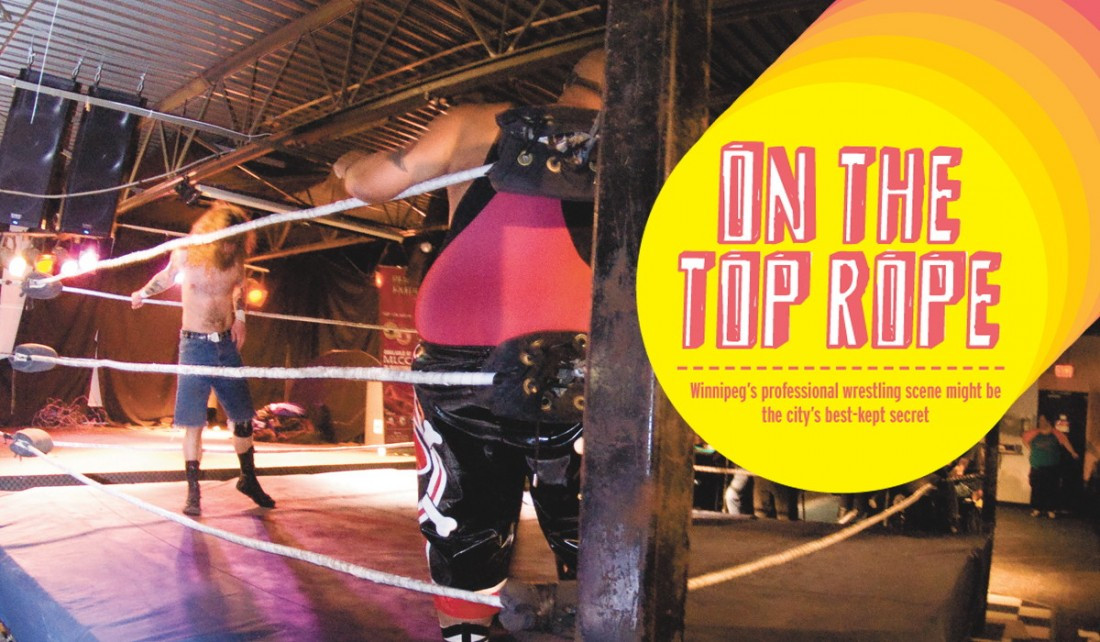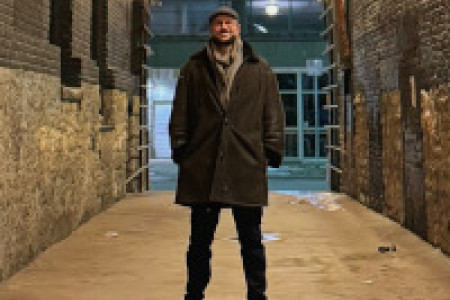On the Top Rope
Winnipeg’s professional wrestling scene might be the city’s best-kept secret
There’s a boom happening in Winnipeg right now. It’s a local scene experiencing the type of renaissance that one rarely sees in action. There’s a good chance you’ve never heard of it, because it receives virtually no coverage from the local press.
I’m not talking about music, film, or theatre. I’m talking about professional wrestling. With three successful promotions running strong and with big-name talent regularly performing in town, Winnipeg’s wrestling culture is too impressive to be ignored.
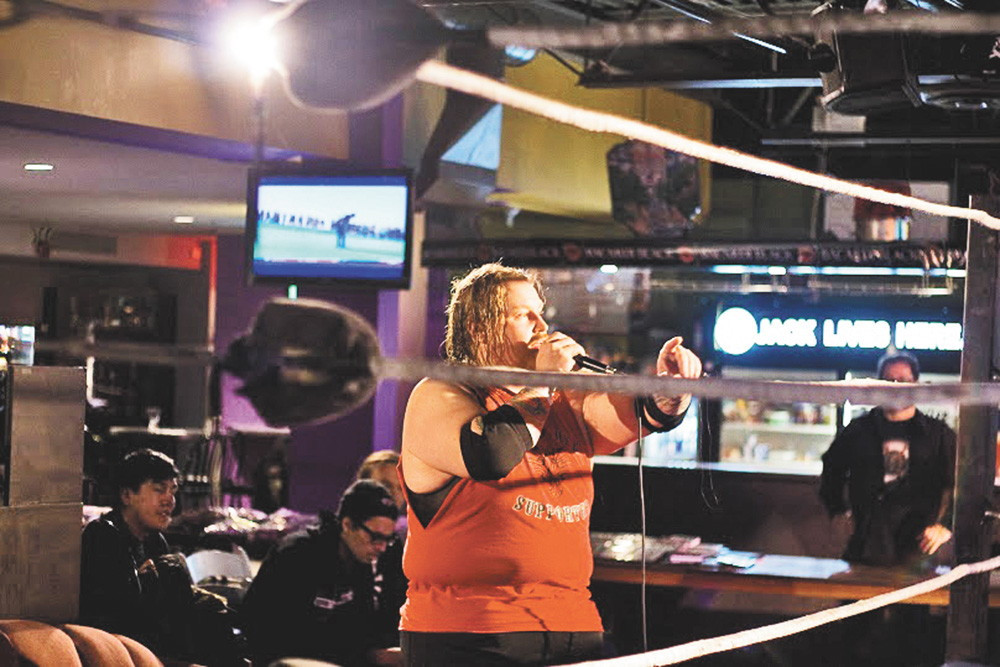
I’m not a wrestling expert, or even a fan, so I enlisted the help of two experts to guide me through Winnipeg’s wrestling subculture. James Korba and Adam Giardino host the podcast and UMFM radio show Loose Ropes Wrestling. Every week, the two discuss professional wrestling in-depth, with a particular emphasis on the local scene.
“I went to my first local show at age 13, and I’m 33 now,” Korba says. “The local scene was very big around 2000, when wrestling was huge, but then it kind of died out. You’d see the same wrestlers every week. It got stale, the talent pool was very low. But recently it’s really picked back up again. With newer wrestlers like Jackie Lee, Alix Vanna, the London Brothers. They’re so passionate about what they do, and you can see that when they wrestle.”
“When we first talked about doing the radio show, I was hesitant,” Giardino explains, “because I thought, ‘What are we going to talk about without sounding geeky?’ But with three local promotions going strong, there’s so much to talk about.”
The three promotions he’s referring to are PCW Wrestling, Canadian Wrestling Elite (CWE), and Primos Wrestling Canada. They’re the key wrestling promotions in Winnipeg, and all three produce local talent and bring in well-known wrestlers from out of town.
“It’s nice for us right now, as fans and radio hosts,” Korba says. “We’re having a hard time keeping up with all the local shows. An hour-long show isn’t enough time.”
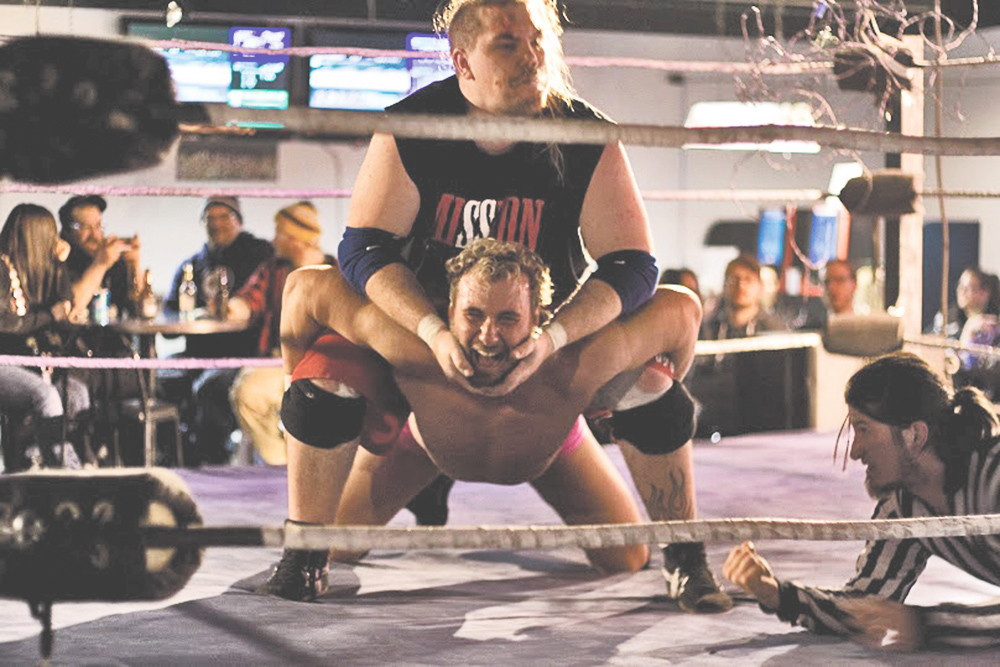
The first step in covering local wrestling is to attend a show. Korba invites me to join him at a Primos show at the Punjab Cultural Centre. From the moment I enter, I’m impressed. The production value is better than anything I’d anticipated. The ring sits in the middle of the high-ceilinged venue, at one end of a lit walkway leading to a curtain that the wrestlers will emerge through. Next to the curtain is a giant video screen and lighting rig. On the other end of the venue are tables where fans and wrestlers trade memorabilia and merchandise. Along the sides are concession tables, which include samosas and butter chicken from The Clay Oven.
At one point, Korba turns to me and exclaims, “It isn’t usually this good!”
When the show begins, it’s equally impressive. Talented local wrestlers like AJ Sanchez and Jackie “The Jet” Lee show their chops. There are also wrestlers from out of town, like A.J. Styles (formerly of TNA Wrestling), Barbi Hayden and Colt Cabana.
Cabana is particularly noteworthy. An alumnus of World Wrestling Entertainment (WWE), Cabana has become a sort of poster boy for the indie wrestling movement. Both as a wrestler and through his podcast The Art of Wrestling, he’s brought mainstream attention to independent wrestling, which is rapidly increasing in popularity due to increased online availability and the shrinking popularity of the WWE.
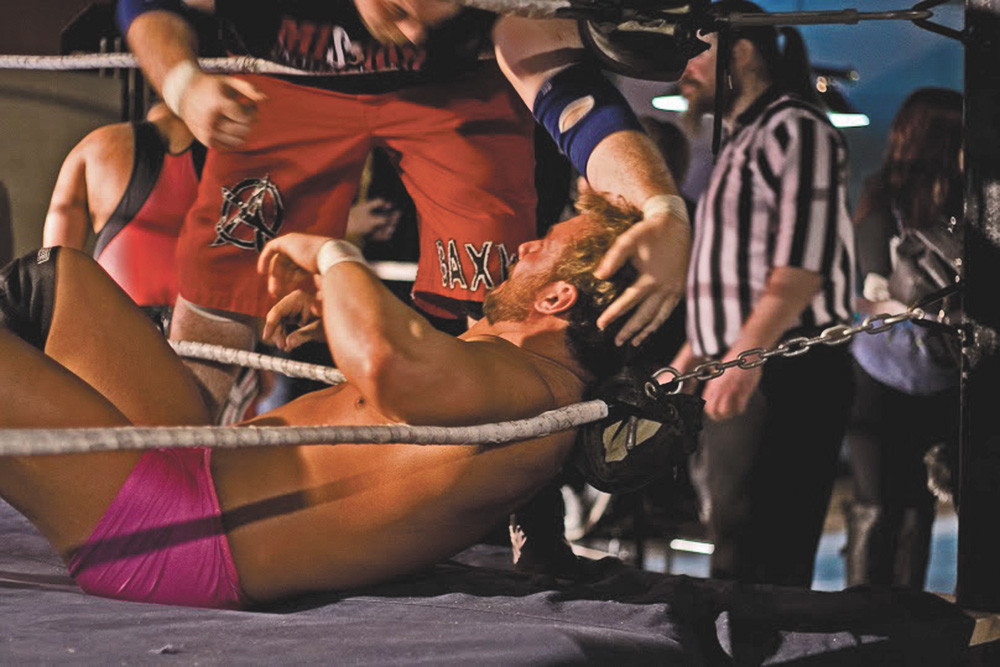
“[WWE] has been mediocre for some time now,” Korba explains. “It’s been boring, they’re repeating themselves. People want something different. There are so many more options now.”
I witness the animosity towards the WWE first hand at the wrestling show. After the final match, A.J. Styles addresses the crowd, pointing out that only one person in the building is wearing a WWE shirt. The spectator in the shirt laughs as the crowd enthusiastically boos him.
“Do you hate wrestling?” Styles asks.
“No,” the spectator answers.
“Then you know what to do,” Styles declares as the young man removes his shirt and throws it on the floor.
Despite its recent popularity, independent wrestling isn’t a new phenomenon in Winnipeg. Guests on Loose Ropes regularly regale listeners with stories going as far back as the 1970s.
Dr. C. Nathan Hatton, a historian at Lakehead University, has done extensive research on wrestling’s history in Manitoba. Regular wrestling promotions began in the city in the early 1920’s at the Industrial Exhibition Board of Trade Building, but Hatton has found records of individual exhibitions going as far back as the late 19th century.
So why is this century-long tradition finally enjoying popularity in 2015 Winnipeg? The prevailing opinion seems to be a combination of new blood and increased cooperation between the city’s best promotions.
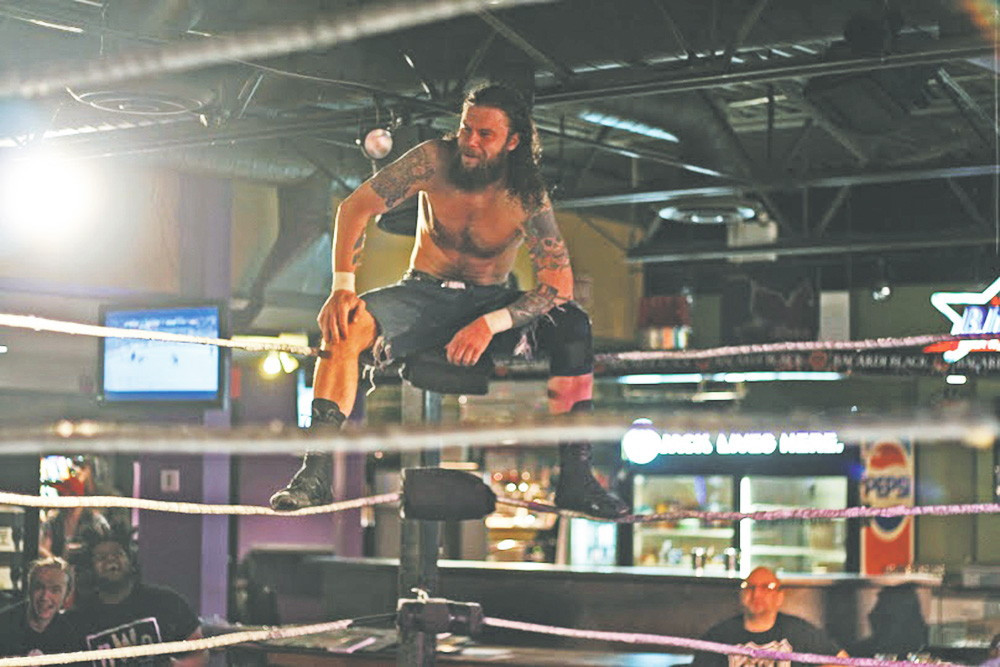
“I’ve been involved in wrestling for sixteen years,” Danny Duggan, the promoter behind CWE, says.
“Right now the wrestling scene is the best it’s ever been. When I started, there were eight different promotions in the area, and they weren’t all running quality shows. But lately we’ve been hammering away at consistency, trying to set a higher standard in the marketplace for what fans can expect at a wrestling show.”
“There was a lot of competitions between promotions in the past,” Andrew Shallcross, the promoter and cofounder of PCW, explains.
“Wrestlers couldn’t wrestle for multiple promotions. From a business perspective, you want your featured wrestlers to be available to you. But it’s not always conducive to putting your best foot forward. Sometimes people fight to bring down their competitors rather than elevating themselves and putting on the best shows for the fans. If everyone in Winnipeg wrestling combined their efforts, we could be a crowning jewel of wrestling in Canada.”
Wrestler Alix Vanna feels the increased cooperation is beneficial for wrestlers as well as fans.
“It’s healthy for Winnipeg wrestling in general,” Vanna says. “There are wrestlers I’d love to step in the ring with that I haven’t even been able to meet. When it’s opened up, you get more experience, more matches and meet more people.”
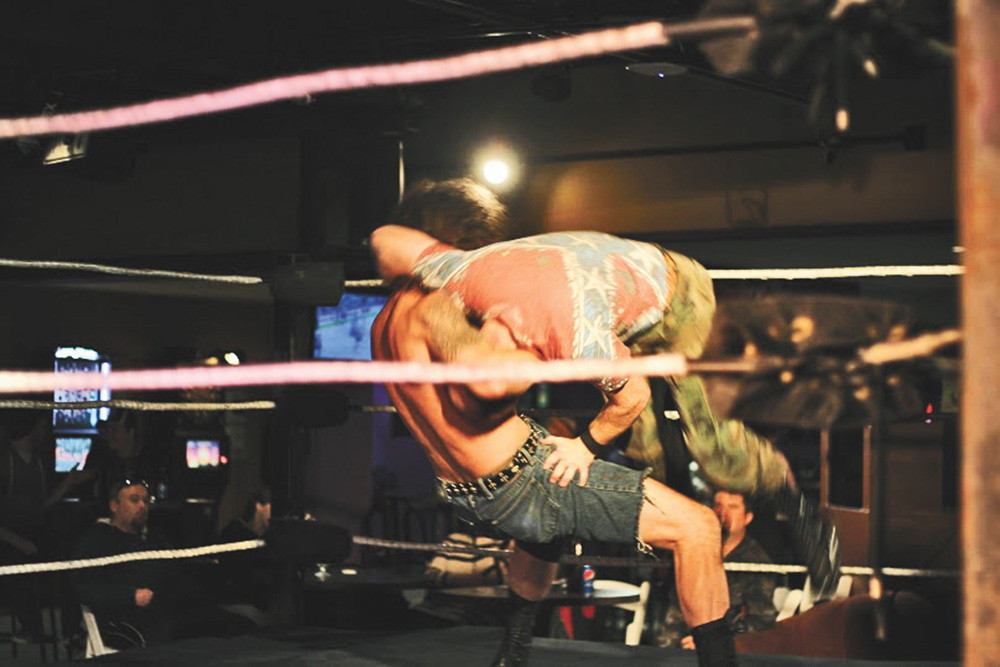
Wrestler Tyler Colton says the experience, and the connections made, are essential.
“There’s always someone out there who knows more than you, who’s been doing it longer, that can teach you a thing or two,” Colton says. “Especially because Winnipeg is so isolated. If you’re not looking for work, it’s easy not to work. It’s very entrepreneurial, booking lots of road gigs, because you can only do a show in Manitoba maybe once every month or two. If you’re waiting on that, you’re not doing much wrestling.”
The question remains: with so much local talent and increased interest, why does Winnipeg wrestling get so little coverage from the local press? Even big events aren’t reported. Last month, Winnipegger and former PCW wrestler Kenny Omega won the Junior Heavyweight Championship in New Japan Pro Wrestling, the world’s second-largest wrestling organization (after WWE), and it was largely ignored by local newspapers.
Shallcross thinks the lack of media attention is a complicated issue with more than one origin.
“I think, to a degree, we’re our own worst enemies. If you’re going to get a mainstream media outlet to cover you, you have to be very professional. There have been incidents where a promotion advertises a big name coming to the city, someone does a story on it, and the wrestler doesn’t show up. I’ve had a newspaper tell me they couldn’t cover wrestling because they’ve been burned too many times,” Shallcross explains.
Duggan has a different theory. Ultimately, it boils down to the still popular perception that wrestling is “fake.” “Wrestling is a strange grey area to the casual person,” Duggan says.
“Is it sports? Is it entertainment? How does it get covered? You have those skeptics who won’t give wrestling a chance. I’ve had sports editors say to me, ‘I won’t cover it. It’s not credible, it’s fake.’ Wrestling isn’t trying to pull the wool over your eyes like they did 30 or 40 years ago. This is entertainment. Everyone’s open about it. Yes, finishes are predetermined. There are scripted characters. But the athleticism and talent is very real.”
Duggan insists that potential wrestling fans shouldn’t be discouraged by how it’s been misinterpreted. The judgement is, ultimately, a tired double standard.
“The TV shows you watch on a weekly basis aren’t real. When I go see a horror movie, I know the characters aren’t really being harmed. I’m suspending my disbelief for those two hours. Wrestling is exactly the same thing,” Duggan says.
For regular updates on Winnipeg’s wrestling scene, follow @CWECanada, @pcwaction, @PrimosCanada on Twitter, or listen to Loose Ropes Wrestling at umfm.com.
Published in Volume 69, Number 20 of The Uniter (February 11, 2015)

